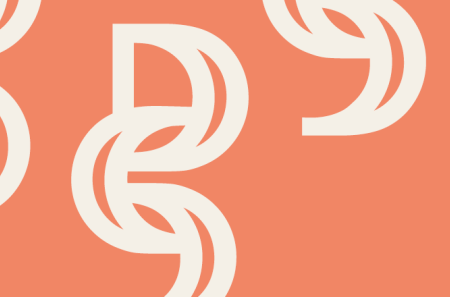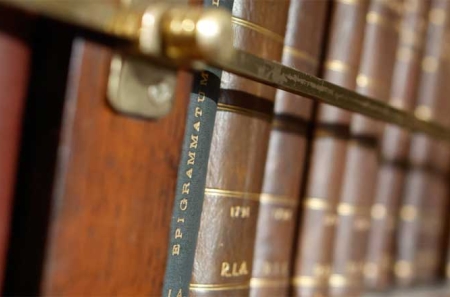John Bell Day Lecture 2023: Testing the foundations of quantum mechanics with levitated mechanical systems
When
Wednesday, November 8, 2023, 12:30 - 13:30Where
Tickets
The 2023 John Bell Lecture will be given by Professor Hendrik Ulbricht, Professor of Physics at the University of Southampton.
This event is hosted by the Chief Executives’ Club at Queen’s and the Royal Irish Academy, in association with the School of Maths & Physics.
Testing the foundations of quantum mechanics with levitated mechanical systems
We are using ideas which go back to Professor John Bell such as generating and testing quantum states based on the superposition principle. The overarching goal of our approach is to extend experimental tests of quantum foundations to the macroscopic domain and to large-mass systems. I will discuss experiments on levitated mechanics based on optical, Meissner and Paul trapping nano- and micro-particles in vacuum. Experiments hold promise for testing the quantum superposition principle interferometrically and non-interferometrically. I will explain how that works and where we are with experiments, and emphasise the role of noise in this context. Experiments are pushed in a parameter regime where both quantum states, such as superpositions, and gravity effects are possible to be generated and detected. That low energy non-relativistic regime is expected to provide a new test arena for experiments into the overlap of quantum mechanics and gravity.
About our speaker
Professor Hendrik Ulbricht
Hendrik obtained his undergraduate degree in physics (Dipl.-Phys.) from the Technical University at Berlin (Germany) and the Albert Einstein Institute (Max Planck Institute for Gravitational Physics, Golm) in 2000 with a theoretical work on Black Hole Thermodynamics. He graduated with a PhD (Dr. rer. nat.) from the Free University of Berlin and the Fritz Haber Institute of the Max Planck Society (Germany) in 2003 with a work on experimental surface science in the group of Nobel Laureate Gerhard Ertl (NP in Chemistry 2007). After a postdoc position at Vanderbilt University in Nashville, US on a Max Kade fellowship and as senior postdoc and Assistant Professor at the University of Vienna (Austria), he joined the Department of Physics & Astronomy in 2008 as a Reader and was promoted to a personal chair in 2014. He leads the Quantum Nanophysics and Matterwave Interferometry research group.
Professor Ulbricht’s current research is Interferometric and Non-Interferometric tests of Quantum Mechanics where the goal is the experimental test of quantum superpositions and the interplay between quantum mechanics and relativity in the macroscopic domain where composite particles contain one million atoms or more; Quantum Technology for Fundamental Physics using Meissner levitation to trap ferromagnetic microparticles at low temperatures and in vacuum. The goal is to use the rotational and translational motion of the ferromagnets to measure tiny forces and fields interacting with the particle; Nanoparticle Trapping, Cooling and Interferometry the goal is the experimental test of quantum theory and eventually also gravity in the context of quantum mechanics by studying nanoparticle motions. This effort ultimately aims to generate spatial quantum superposition states of such nanoparticles, which is directly testing quantum mechanics in the macroscopic domain.
John Stewart Bell - The man who proved Einstein wrong
An extract from 'Ingenious Ireland', Mary Mulvihill, 2002, Dublin. Town House - Copyright of the Mary Mulvihill estate and reproduced here with their kind permission.
'The quantum world of particle physics is weird. Very weird. So weird, in fact, that even Einstein could not accept it. One of the people instrumental in uncovering that weirdness was a brilliant Belfast scientist John Bell (1928-90). Bell studied science at QUB, but spent most of his working life at CERN, the particle physics laboratory in Geneva. He made many important contributions, often collaborating with his wife Mary Ross, who was also a physicist, but he is best known for an idea he proposed in 1964.
First, a little history. In 1935, Albert Einstein, Boris Podolsky and Nathan Rosen drew attention to a paradox in quantum theory. If twin particles, say for example two particles of light (photons), were to be emitted from a single source, and fly off in opposite directions, the properties of one would still depend on the properties of the other - the are 'entangled'. In the bizarre world of quantum mechanics some of the properties are not concretely realised until they are actually measured - until then they do not have a concrete existence - yet they are still entangled. Measure the properties of one particle, and quantum theory predicts you will instantly know the properties of the other, as if information had passed between them faster than the speed of light. Einstein called this 'spooky action at a distance', and thought it most unlikely.
John Bell proposed a way to explore this apparent paradox, but it was 20 years before physicists, led by Alain Aspect at Orsay in Paris, could attempt the experiment: they created pairs of photons, separated the twins, and sent each flying on its separate way; but when they measured the polarisation of one photon, the instantly knew the polarisation of its twin. This proved that John Bell was right, and Einstein was wrong - the world really is spooky, weird and entangled.
Bell is also known for pioneering work in elementary particle physics where he helped explain (along with two US physicists, Stephen Adler and Roma Jackiw) why a particular sub-atomic particle, a neutral pion, spontaneously explodes into two photons - though the prevailing ideas said this should not happen so quickly. Their explanation uncovered a subtle quantum effect (the Adler-Brll-Jackiw anomaly), which is central to all modern attempts to unify the forces of nature. Bell was awarded many international honours, and had been nominated for a Nobel Prize, but died suddenly of a stroke in 1990.
Learn more about John Bell: www.ria.ie/about-john-bell




